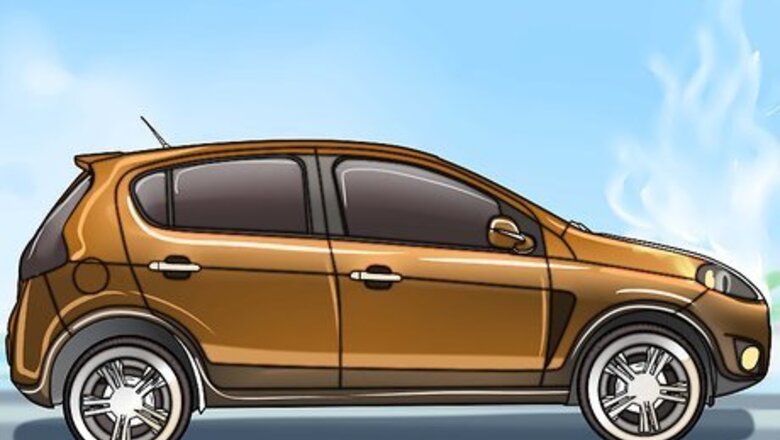
views
Handling an Overheating Engine
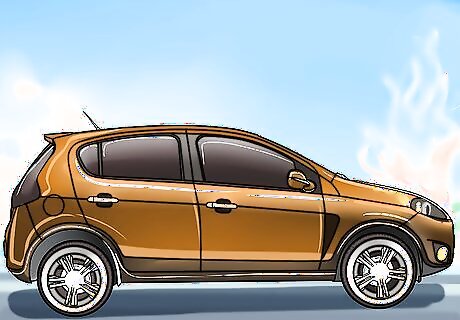
Avoid panicking and pull over as soon as you can. An overheating engine, while serious, will not cause you immediate harm. If your temperature gauge hits the red or you notice steam coming from your engine, slow down and pull over as soon as you find somewhere safe. If you notice white clouds coming from your engine, it is not smoke but steam that is coming off an overheated engine, and you have some time to pull over. If you cannot immediately pull over, you should: Turn off the AC and open the windows. The AC puts additional demand on the engine. Crank the heat and fans all the way up--this draws heat from your engine. Turn on your hazards and drive at a slow, constant pace until you can stop. Reduce RPMs as much as possible to help the engine work less, and avoid driving uphill if possible.
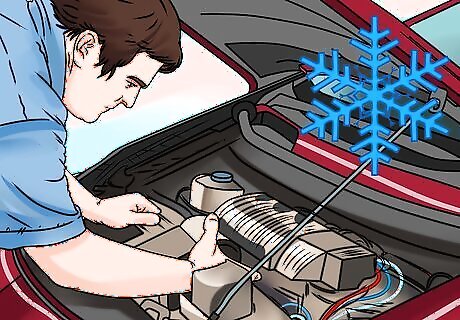
Pop the hood when there is no more steam coming out. If the car isn't too hot, turn off the vehicle and pop your hood. If the hood is extremely hot to the touch or if you see steam, then it is advisable to wait until the hood cools before you open it all the way. Opening the hood helps dissipate some of the heat away from the engine. Turn the engine off and leave the key in the ignition in the "on" position. Your lights, dashboard, etc., should still be on. This will allow the cooling fans to continue running without running your engine, which will help speed the cooling process. Let the engine cool completely before you touch the engine or open the radiator cap. This cooling process could take as long as 30-45 minutes, but will save you from dangerous burns.
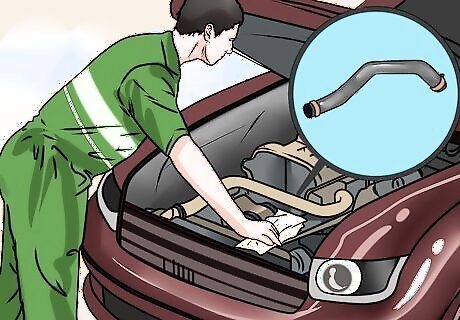
Check the upper radiator hose. Squeezing the upper radiator hose can help you determine whether your system is under pressure, and thus whether it's safe to remove the radiator cap. If it feels firm and is difficult to squeeze, then the system is likely still pressurized and you should not remove the radiator cap. If the hose compresses easily when you squeeze it, it is probably safe to remove the radiator cap. Use a rag or towel when you handle this hose, as it can be very hot.
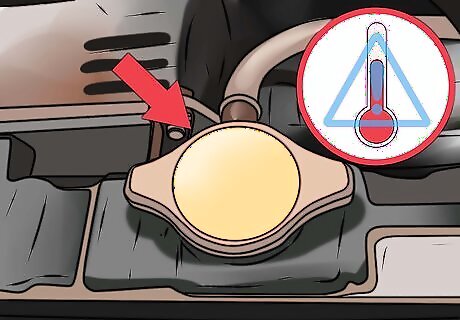
Leave the radiator cap on until it is cool. The pressure and steam inside can shoot a dangerous jet of fluid back at your face. Play it safe and leave the radiator cap on the car for as long as you can. If it feels warm to the touch, leave it. An overheated engine may have coolant as hot as 260F. Inside a sealed system, it will not boil. However, once exposed to the air it will flash boil and can cause severe burns. Wait until the system is cool.
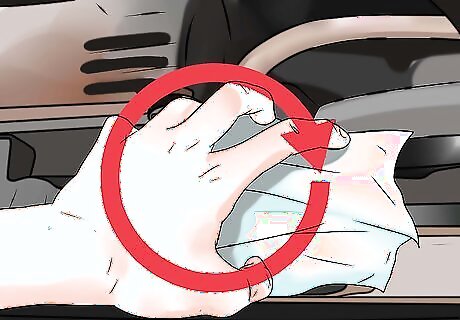
Turn the radiator cap. Use a thick towel or rag to turn the cap carefully. The cap will expose the fluid inside the radiator or expansion tank to the atmosphere. If your radiator cap doesn't have threads, you will need to push down on it after you've loosened it in order to clear the safety lock. This will allow you to remove the cap completely.
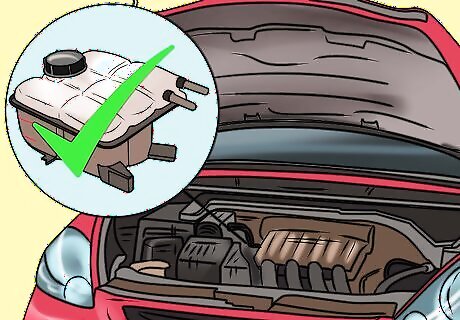
Check your coolant reservoir tank once the engine has cooled enough. This usually takes 30-45 minutes. The reservoir tank resembles a white, plastic milk jug and is connected to the radiator cap. There is usually a mark on the side that lets you know how full it should be.
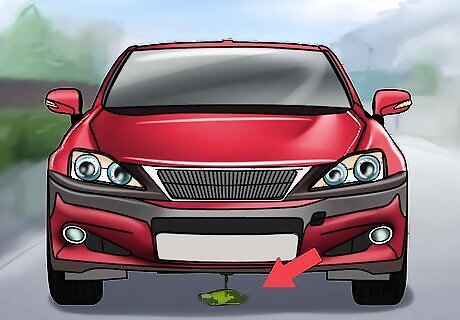
Check the engine for leaks. The most common cause of engine overheating is a leak in the coolant system. Look for fluid on the engine or pooling underneath the car, especially if the coolant is low or empty. That said, cooling systems need pressure to function, so even a small leak that hasn't drained a lot of coolant can cause problems. Coolant usually smells sweet, and can show up on hoses, under the car, or around the radiator cap. It flows more like water, unlike oil which has a thicker consistency. Coolant is often green for older models, but the color of coolant can vary depending on your car's make and model.
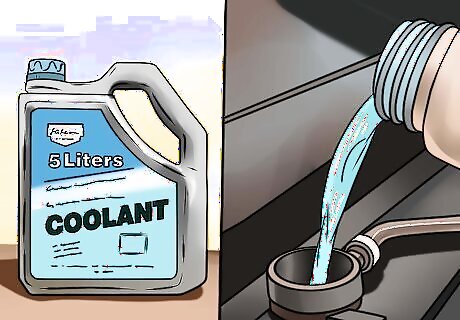
Refill the coolant after the car has cooled off. If you have coolant, add some to the car once it has cooled down, usually after 30-45 minutes. Open the radiator cap and pour a little in, 3-5 seconds worth. If you have water, mix the coolant and water together in roughly even parts and add that -- most engines are made to function with a 50/50 mixture of coolant and water. In a tight pinch, just water can substitute for coolant, though you don't want to use it for too long.
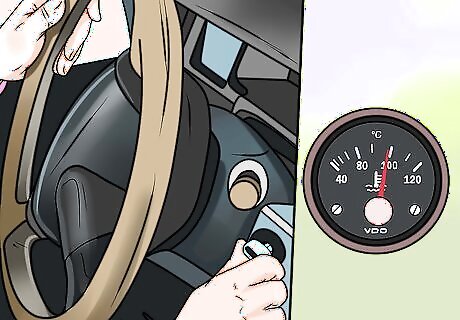
Turn the car back on after cooling and check the temperature gauge. Is it shooting back up into the red? If so, you should turn the car back off and wait another 10-15 minutes for it to cool off before driving. If not, you should be able to keep driving until you see a mechanic.
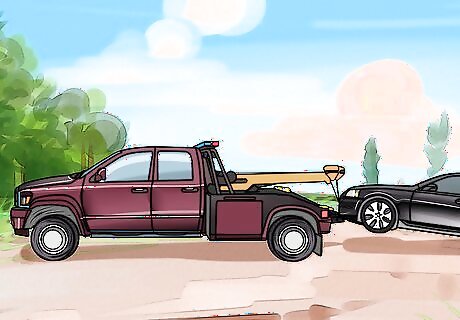
Call a tow-truck if the issue doesn't go away or you notice bigger problems. If you have a leak in the coolant system, are dripping oil, or can't get the engine to cool down, call a tow-truck immediately. Engine overheating can completely ruin a motor, totaling your car if you aren't careful. If you must drive the car, be sure to let it cool as much as possible before restarting.
Driving with an Overheating Engine
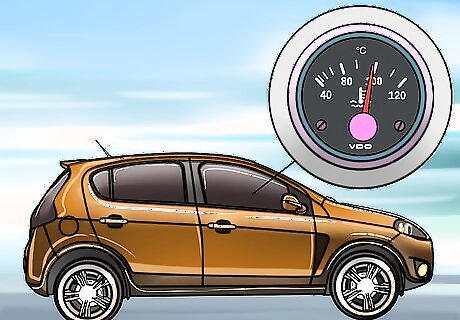
Keep driving after the temperature gauge lowers back down. You do not, however, want to keep driving for long if you can help it. That said, sometimes you have no choice but to keep moving until you can get to help. If the car does not overheat again, you may have had a one-time overheating due to a variety of factors (AC on, hot day, stop and start traffic). Still, you need to keep your eyes on the temperature gauge whenever possible to avoid more issues. Most cars are calibrated to sense overheating before serious engine damage, giving you some time to fix the problem. This does not, however, mean you should ignore your gauges.
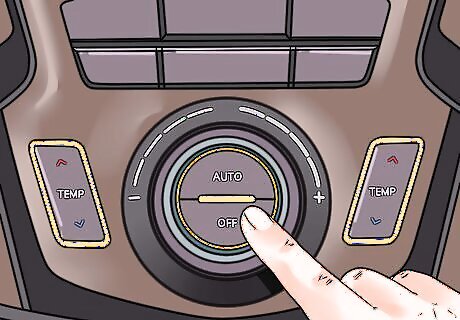
Turn off the AC. Air conditioning uses engine power to cool off the car, and you don't need your engine under any more strain than it can handle. Open the windows to cool off instead.
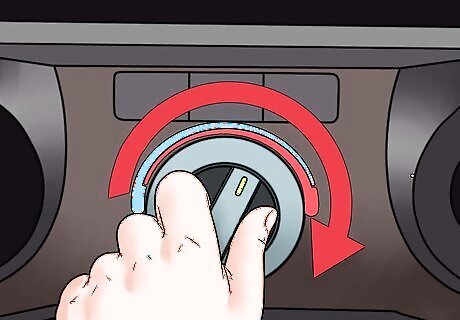
Crank your heat up to full blast. While this seems counter-intuitive, cars heaters warm up by sucking heat made by the engine and blasting it into the car. Thus, turning your fans and heat to the highest settings will pull hot air out of the engine and cool the car. It may, however, get a little uncomfortable. Turn the vents to point out the window to prevent things from getting too hot in the cab. Alternately, you can set the heat to the "defroster" setting to avoid it blowing directly on you.
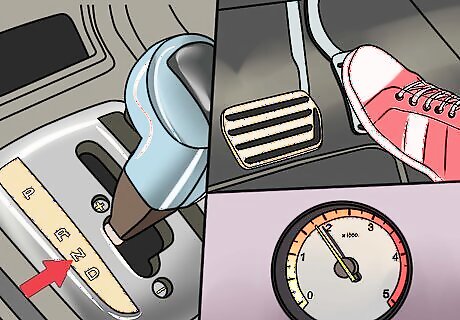
Put the car in neutral and rev the engine. Get yourself up to 2000 rpms with the car in neutral. This helps the engine and the fan circulate air quicker, getting cool air and coolant to the engine and helping you remove some heat from the car. If you're in stop/start traffic, this could be a great way to keep the engine moving when the car can't.
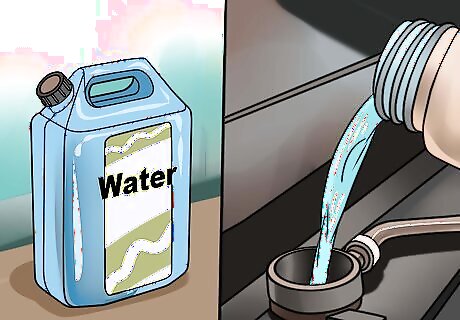
Add water to the radiator if you are out of coolant. Though not recommended for long drives, water will help keep your engine cool in a pinch. Add warm water to your radiator, but only after the engine has cooled. Cool water can cause a crack in your engine block due to the extreme change in temperature.
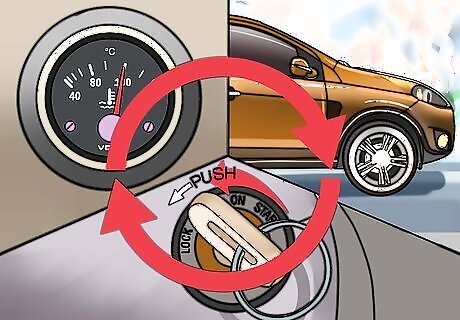
Drive for short stretches, turn the car off, and repeat if you need to keep moving. If you absolutely must drive with an overheating engine, keep your eye on the temperature gauge. Every time it gets hot, pull over, turn the car off, and wait for 10-20 minutes as it cools. This is not great for the engine, but it is better than trying to drive through it and causing a total meltdown.
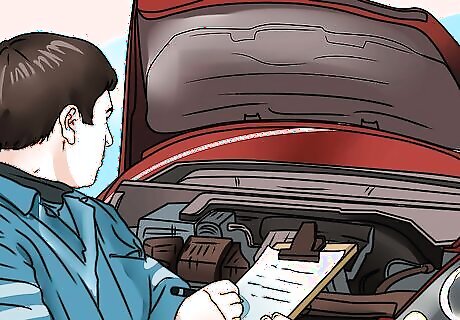
Know that you will likely need to go to the mechanic if your car chronically overheats. If your car keeps overheating, has a leak, or cannot start, you need to see a mechanic. Even if these tips help you "deal" with overheating when it occurs, there is likely a larger issue that needs to be fixed before a major meltdown.
Avoiding Overheating
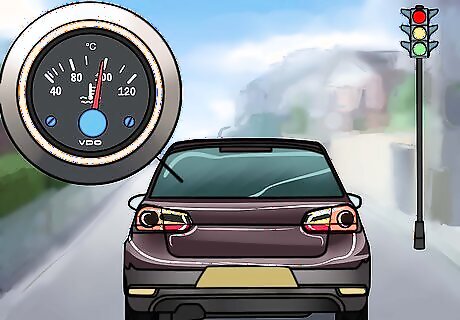
Drive at a slow and steady pace instead of stopping and starting in traffic. Stopping and starting puts stress on the engine that can cause it to overheat, especially in older cars. Ease off the break and let your car roll forward slowly, knowing that you will likely have to stop again when you reach the next car's bumper anyway. Making checking your temperature gauge a regular habit at red lights and stop signs.
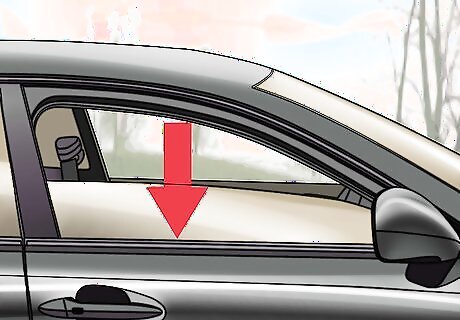
Use the windows, instead of the AC, when to cool the car. The AC uses engine power to cool the air in the car, putting extra strain on the engine. The first thing you should do when overheating is to turn off the AC, but you should avoid using it at all if you fear your car might overheat for any reason. If you are very late for an inspection, find a leak in your radiator, have unresolved AC issues, or are low on coolant, try not to use the AC at all.
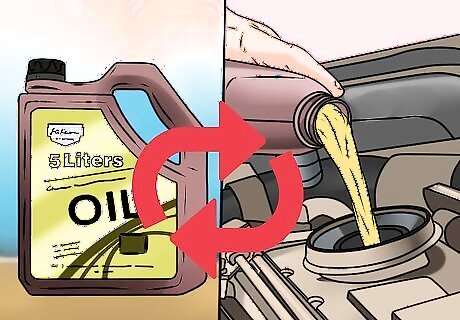
Change your oil regularly and have your fan checked simultaneously. Old oil can lead to overheating, especially when coupled with low coolant or other issues. Whenever you get your car's oil changed, ask the mechanics to look at your fan as well -- spotting an issue now can save you a costly fix later on. You should hear your fan whirring after you've turned you car off, as it is still working to cool your car off.
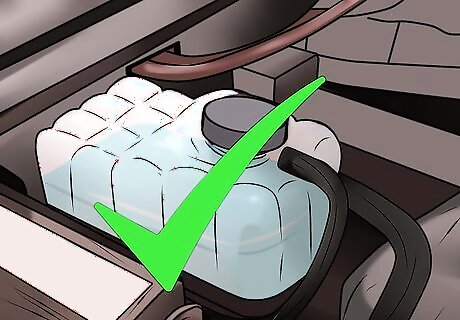
Top off your coolant at the beginning of summer. Check your coolant reservoir and make sure that the levels are still where they need to be as indicated on the sides. If they are a little low, mix equal parts coolant and water and add it to the recommended level. This is especially important if you live in hot areas. When checking the coolant, take 2-3 minutes to search for any leaks as well. Coolant is usually green and smells sweet. Check under the car, around the engine, and on any hoses or radiator parts that you can see.
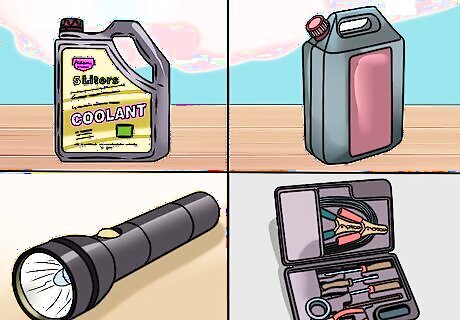
Keep an emergency kit in your car for overheating issues. You don't want to be stranded in the middle of nowhere with an engine you can't use. A simple preparedness kit will help keep you and your car safe, especially if you need to keep driving to get to a mechanic. You should pack: Extra coolant. A gallon of water. A tool-kit. A flashlight. Non-perishable food. A blanket. A straight razor blade. Duct tape. Philips and flat head screwdrivers.



















Comments
0 comment